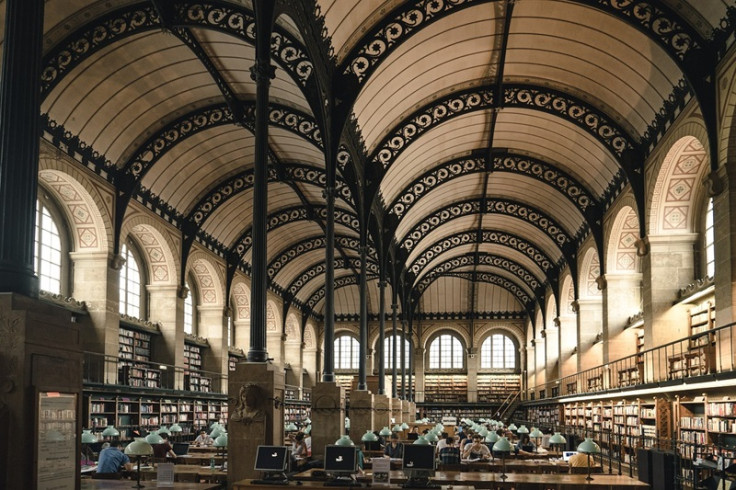
Libraries around the world offer more than just a collection of books; they are architectural wonders, cultural treasures, and havens for knowledge seekers. From historic masterpieces to modern marvels, these libraries captivate with their stunning designs, rich histories, and extensive collections.
Across the globe, libraries stand as testaments to human creativity, knowledge, and ingenuity. From the majestic halls of historic institutions to the innovative designs of modern architectural wonders, these libraries inspire awe and reverence in all who visit them.
As guardians of knowledge and gateways to the past, present, and future, they continue to enrich our lives and remind us of the enduring power of the written word. Join us as we embark on a journey to discover some of the most breathtaking libraries that grace our planet.
30.
National Library of Belarus, Minsk

The National Library of Belarus, an architectural marvel shaped like a Rhombicuboctahedron, stands as one of the most distinctive landmarks in Minsk. Opened in 2006, the 22-story building has become a popular tourist destination, offering a public observation deck and hosting concerts on its lawn. As the official copyright library of Belarus, it boasts a collection of over 8 million items and holds the largest collection of Belarusian printed materials. Additionally, it houses the third largest collection of Russian works globally, making it a significant cultural hub in the Republic of Belarus.
29.
Royal Danish Library, Denmark
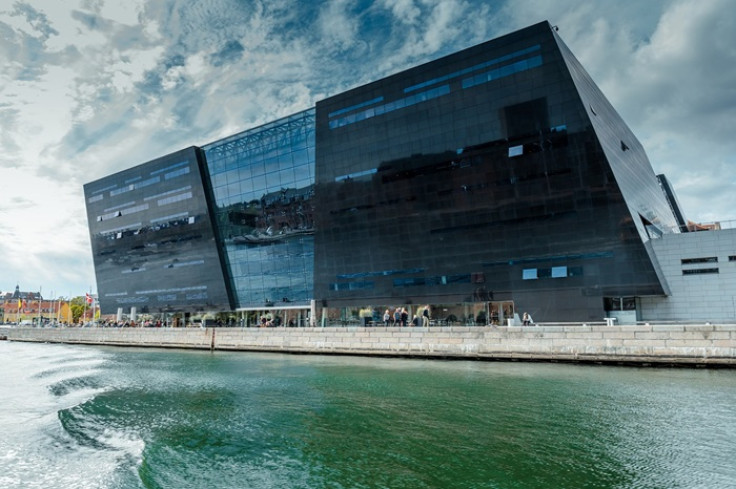
The Royal Danish Library, established in 1648 by King Frederik III, houses all works printed in Denmark since the 17th century and preserves nearly every Danish book ever written, dating back to the first Danish book printed in 1482. As the largest library in the Nordic countries, it holds many significant works, including the correspondence of Hans Christian Andersen and historical maps of the Polar Region. Additionally, it houses the Arnamagnæan Manuscript Collection, named after Icelandic scholar Arnas Magnæan, who dedicated much of his life to collecting manuscripts from Iceland, Norway, Denmark, and Sweden.
28.
Marciana Library or National Library of Saint Mark, Italy
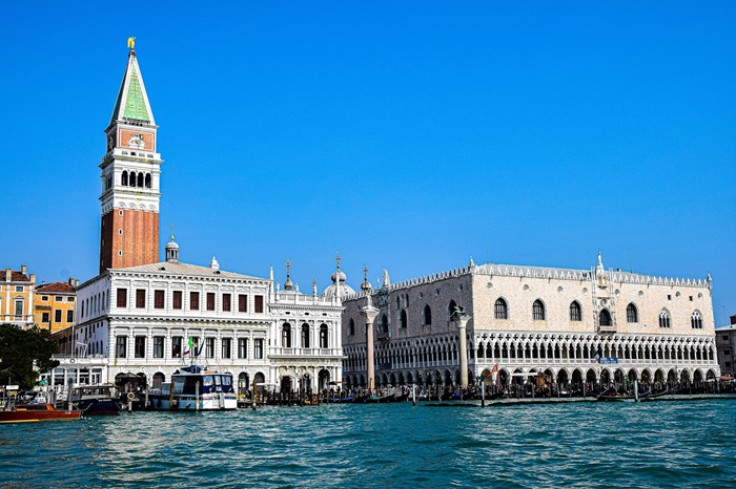
Housed in a Renaissance building in Venice, the National Library of St. Mark's boasts one of the world's most important collections of classical texts. Its history traces back to 1468 when Cardinal Bessarion gifted the Republic of Venice with 250 manuscripts and 750 codices, laying the foundation for the library. By 1603, a law mandated the deposit of one copy of all books printed in Venice at the National Library. Today, the collection comprises over a million books, 13,000 manuscripts, 2,883 incunabula, and more than 24,000 16th-century works. Constructed between 1537 and 1588, the library is a masterpiece of Venetian Renaissance architecture, designed by Jacopo Sansovino.
27.
Reading Room, British Museum, UK
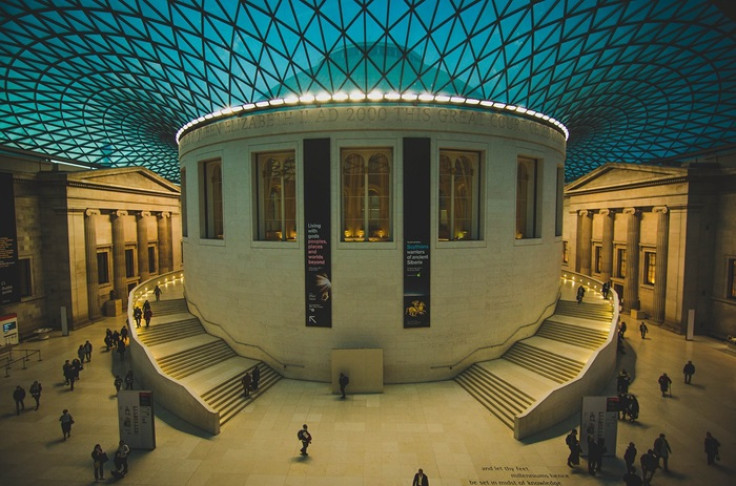
The Reading Room at the British Museum, situated in the heart of the Museum's Great Court, features a distinctive domed exterior housing a unique interior ceiling crafted from a special type of papier-mâché, marking a notable architectural achievement. Historically, access to the Room was restricted to registered researchers, drawing notable figures such as Karl Marx, Oscar Wilde, Mahatma Gandhi, and H.G. Wells.
26.
Rampur Raza Library, India
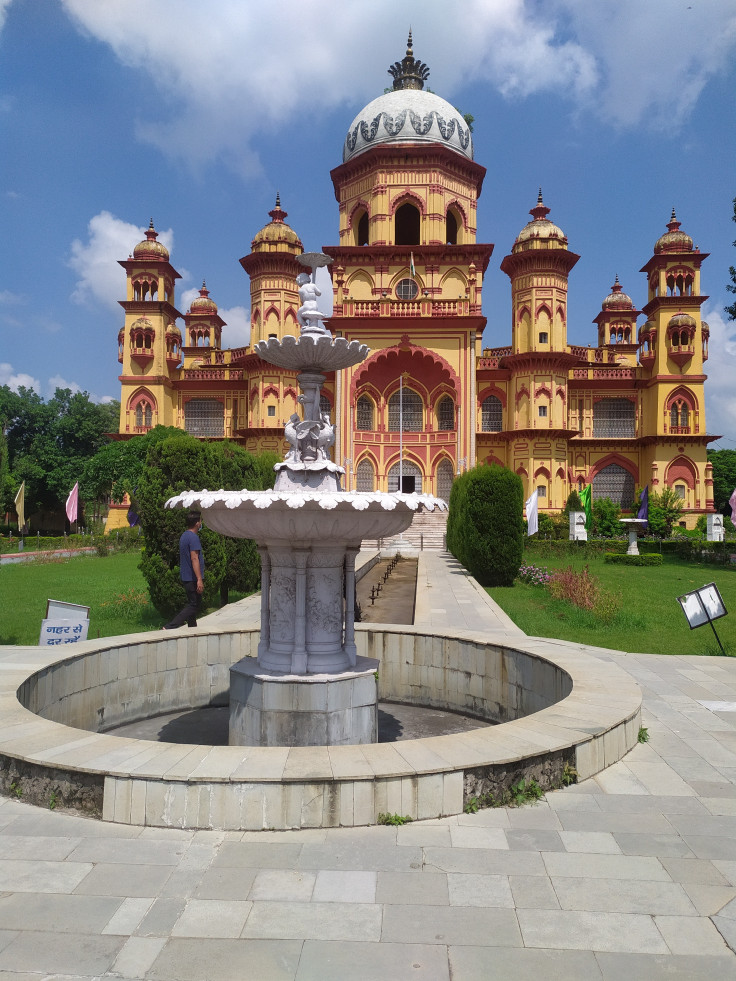
Founded in 1774 by Nawab Khan, the home of Indo-Islamic sculptures, this library is a treasure trove of cultural heritage. It boasts Mughal miniature paintings, historical documents, and valuable manuscripts, making it a magnificent repository of history. Alongside these treasures, rare illustrated works in Persian and Arabic languages are housed within its walls, complementing a collection of over 60,000 printed books.
25.
Library of Congress, USA

The Library of Congress, located in Washington, D.C., serves as the library and research service of the U.S. Congress and is recognized as the de facto national library of the United States. Established in 1800, it stands as the nation's oldest federal cultural institution. Housed in three elaborate buildings on Capitol Hill, the LOC is renowned as one of the largest libraries globally. Its vast collections totals approximately 173 million items in over 470 languages.
24.
Beinecke Rare Book & Manuscript Library, USA
The Beinecke Rare Book & Manuscript Library, situated within Yale University Library in New Haven, Connecticut, is renowned as one of the world's largest buildings dedicated to rare books and manuscripts. Established through the generous gift of the Beinecke family and endowed for financial independence, it operates autonomously from the university. Governed jointly by the University Library and Yale Corporation, the Beinecke Library stands as a treasure trove of literary heritage. Situated on Yale University's Hewitt Quadrangle, the building was designed by Gordon Bunshaft of Skidmore, Owings & Merrill and completed in 1963. Bunshaft's innovative design features a six-story glass-enclosed tower of book stacks, holding approximately 180,000 volumes, inside a cube.
23.
State Library Victoria, Australia
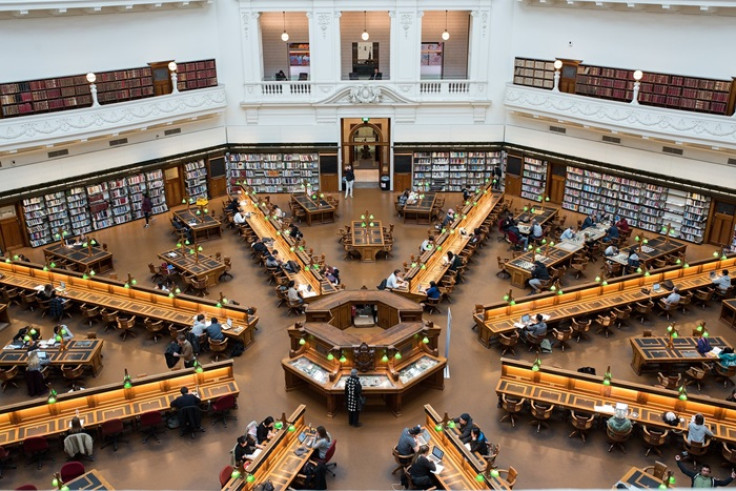
The Public Library in Melbourne, known as State Library Victoria, holds the distinction of being Australia's oldest public library, established in 1854. It was also one of the first free libraries globally. As of 2023, it remains one of the busiest libraries worldwide. Its extensive collection exceeds five million items, encompassing not only books but also manuscripts, paintings, maps, photographs, and newspapers.
22.
Stockholm Public Library, Sweden
Designed by Swedish architect Gunnar Asplund, the Stockholm Public Library's collection exceeds 2 million volumes and 2.4 million audio tapes, CDs, and audiobooks. Asplund opted for a rotunda over a dome, lending the exterior a sense of monumentality with its tall cylinder. Throughout the planning process, he simplified classical elements into abstract geometrical forms, largely eschewing architectural adornment. The library was Sweden's first to implement open shelves, allowing visitors to access books independently.
21.
Tianjin Binhai Library, China
The Tianjin Binhai Library was completed in 2017 as part of the cultural district envisioned by German architects GMP's masterplan, executed by MVRDV and Tianjin Urban Planning and Design Institute (TUPDI). The library features a spherical auditorium and floor-to-ceiling bookshelves. Its terraced design creates an interior landscape mirroring the exterior façade, with each level doubling up to showcase the stepped bookshelves. The first and second floors of this futuristic five-level building house reading rooms, books, and lounge areas.
20.
Library of the Monastery of St. Gall, Switzerland
The Library of the Monastery of St. Gall in St. Gallen, Switzerland, along with the monastery itself, was recognized as a UNESCO World Heritage Site in 1983 for its historical significance as one of the most important cultural centers in Europe. Designed in the Rococo style by Peter Thumb and constructed between 1758 and 1767, the library hall holds the oldest collection in Switzerland and is one of the earliest and most significant monastic libraries globally. Founded by Saint Othmar, the library miraculously survived a fire that destroyed the Abbey in 937. Its collection of almost 160,000 volumes includes over 1,650 incunabula and 2,100 manuscripts dating from the 8th to 15th centuries, notable for their Irish, Carolingian, and Ottonian origins.
19.
Hachioji Library at Tama Art University, Japan
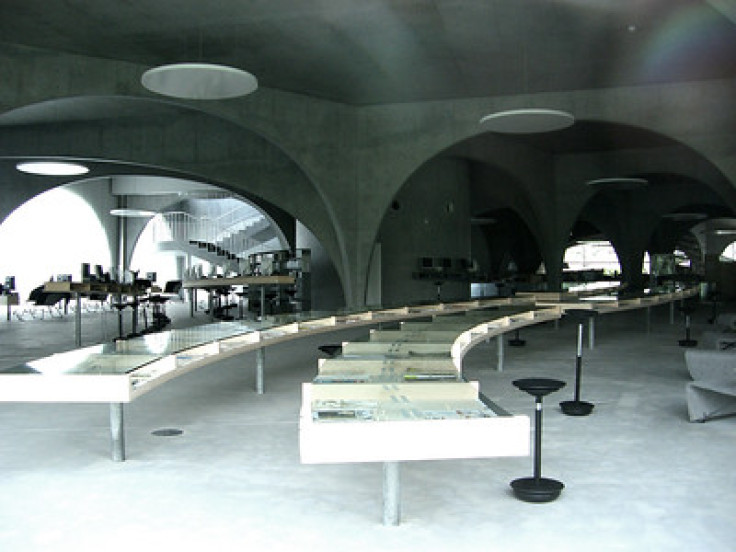
The Hachioji Library at Tama Art University in Tokyo, embodies a cool minimalism with its open floor plan and concrete colonnades, drawing inspiration from brutalist architecture. Designed by the Pritzker Prize-winning firm Toyo Ito & Associates, the university's head, Hidemi Kondo, emphasizes the space's significance for students as both a resource for research and education, as well as a source of inspiration for artists. The library boasts a collection of 1,500 periodicals, 47,000 foreign books, and 77,000 Japanese books, with a focus on subjects such as design, art, and architecture.
18.
Bibliotheque Interuniversitaire de la Sorbonne, Paris
The Bibliotheque Interuniversitaire de la Sorbonne, located in Paris, is a centuries-old library affiliated with the renowned Sorbonne at the University of Paris. Originally constructed in the 18th century, it has since become one of Paris's largest libraries, housing an impressive collection of two million volumes covering a wide range of subjects, notably history, geography, philosophy, and French literature. One of its highlights is the Saint-Jacques Reading Room, known for its elegant rich wood walls and soothing mint green and cream color scheme.
17.
Royal Portuguese Reading Room, Rio de Janeiro
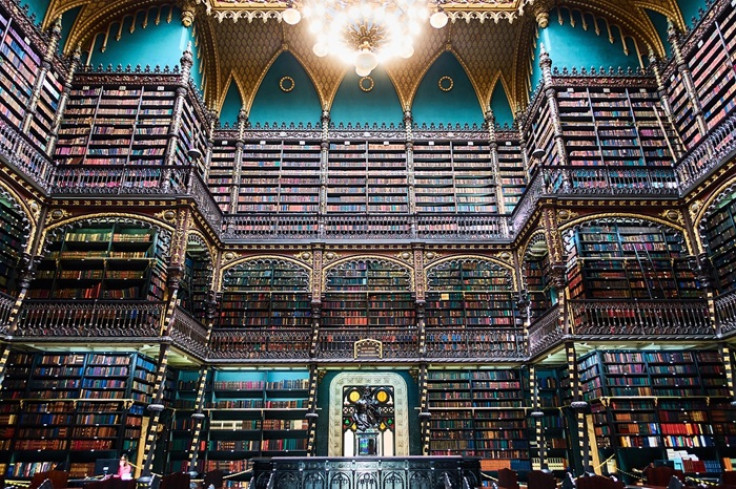
In Rio de Janeiro, the Royal Portuguese Reading Room boasts a striking limestone exterior complemented by intricate dark wood arches, stained glass windows, and vibrant blue ceilings, creating a haven for book lovers. With an impressive collection of 350,000 volumes, visitors could easily spend the entire day immersed in its treasures.
16.
Clementinum Baroque Library, Czech Republic
Prague boasts one of the world's most beautiful Baroque libraries, completed in 1727, with historically significant globes and fresco decorations by John Hiebel showcasing themes of science and art. The collection, comprising over 27,000 volumes, mostly foreign-language theological literature, remains accessible to visitors.
15.
Beitou Public Library, Taiwan
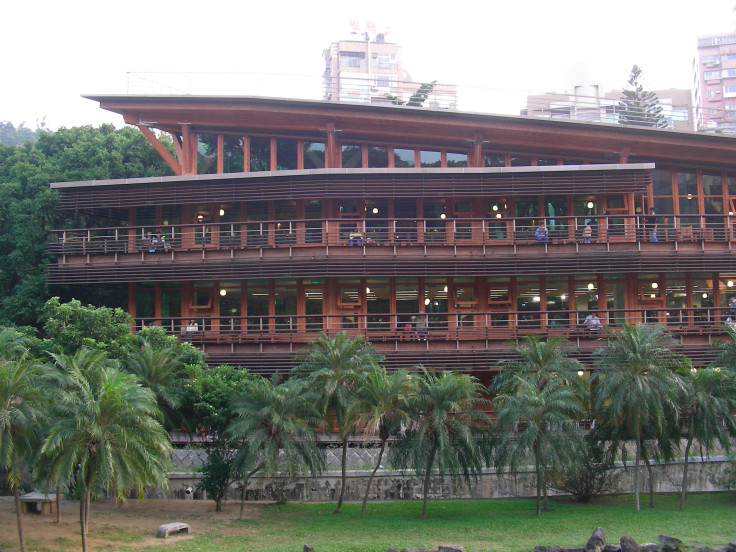
The Beitou Public Library in Taipei, Taiwan, began operations in November 2006, becoming the first green library in Taiwan. Designed by Bio-Architecture Formosana, this two-story building was constructed with a focus on reducing electricity and water consumption. The library features large windows that minimize electricity usage and a roof partially covered with photovoltaic cells to generate electricity and collect rainwater. The library boasts a collection of over 20,000 English and Chinese literary works.
14.
City Library, Germany

The City Library in Stuttgart, Germany, may not boast the opulence of older grand halls, but its cube-like design is undeniably intriguing. With its bright, white, five-story exterior resembling a modern art gallery, it stands out as a unique architectural marvel. The main reading room, shaped like an upside-down pyramid, is particularly fascinating. The library takes the form of a cube with an edge length of 45 meters, constructed using pale gray fair-faced concrete. Its double façade, comprising a glass brick-level and an inner transom/mullion façade, serves as a thermal building shell. Inspired by the "Cenotaph for Newton," the symmetry and form of the building's entrance add to its allure.
13.
Central Library of Vancouver, Canada

The Central Library in Vancouver is modeled after the Roman Colosseum and occupies an entire city block. The library, spanning nine floors, also accommodates reading rooms, offices and cafes. Dedicated to lifelong learning and meeting the diverse needs of Vancouver residents, it has served the city and surrounding areas for over a century. With a collection exceeding 9.5 million digital and physical items, including magazines, music, movies, eBooks, and books, it remains a vital resource for the community.
12.
Bibliotheca Alexandria, Egypt
Paying homage to the great monument of antiquity, the modern Bibliotheca Alexandrina in Egypt stands as a tribute to the famous ancient library of Alexandria. Designed by the Norwegian architect Snohetta, the circular granite building, though not resembling the original, is adorned with carvings by local artists and encircled by a clear, blue reflecting pool. Housing a planetarium, manuscript restoration lab, four museums, four art galleries, and an impressive eight million books, the library's exterior etchings depict the evolution of human language.
11.
Wiblingen Monastery Library, Germany

Founded in 1093, the Wiblingen Monastery Library boasts an ornate interior, highlighted by a zigzagging gallery supported by columns. The sweeping ceiling fresco and numerous statues encapsulate the architect's vision of the library as a sanctuary for preserving "treasures of science and wisdom." It stands as one of the most beautiful historic libraries in the world.
10.
Royal Library of San Lorenzo de El Escorial, Spain
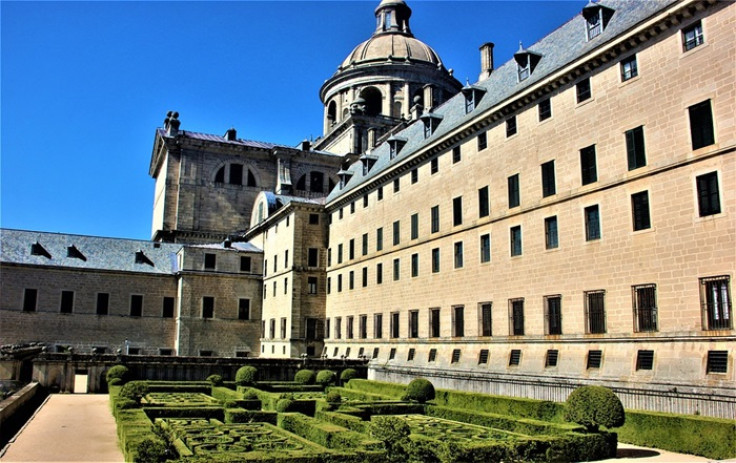
In the 16th century, King Philip II of Spain commissioned the Royal Library of San Lorenzo de El Escorial to house manuscripts, theological and philosophical works, as well as scientific instruments such as astrolabes, maps, and globes. The library was designed by the architectural and mathematical genius Juan de Herrera.
9.
Strahov Monastery Library, Czech Republic
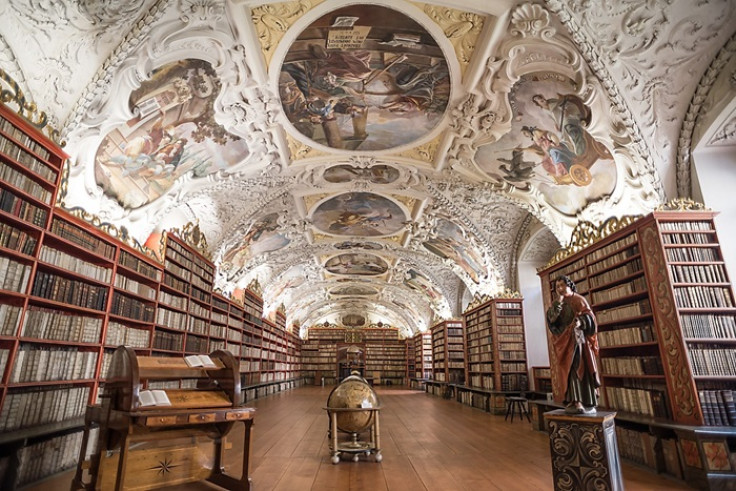
The Strahov Monastery Library in Prague, Czech Republic, ranks among the most attractive ancient libraries worldwide, situated near Petrin Hill and Prague Castle. Established in the twelfth century, it remains one of the Czech land's oldest monasteries still in operation, open to the public year-round with daily tours available. The Theological Hall, dating back to 1671-1674, holds theological writings, Bibles, and translations. With its ornate stucco ceiling adorned with Biblical artwork, this library, built in 1679, doubles as a splendid art gallery and is a must-see for visitors to Prague.
8.
Rococo library, Portugal
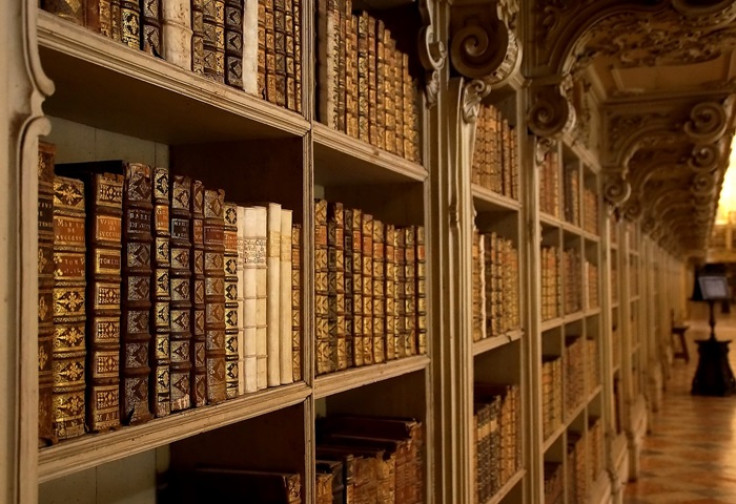
Situated at the Palace of Mafra, the Rococo library is the palace's highlight. Built by Manuel Caetano de Sousa, it spans 88 m in length, 9.5 m in width, and 13 m in height, boasting a magnificent floor adorned with rose, grey, and white marble tiles. The Rococo-style wooden bookshelves, housing over 36,000 leather-bound volumes, line the sidewalls in two rows, separated by a balcony with a wooden railing. These volumes, including valuable bibliographical jewels like incunabula, were bound in the local workshop in the rocaille style, also by Manuel Caetano de Sousa. Notably, the library is home to a bat colony, including grey long-eared bats and serotine bats, which protect the books from insect damage.
7.
New York Public Library, USA
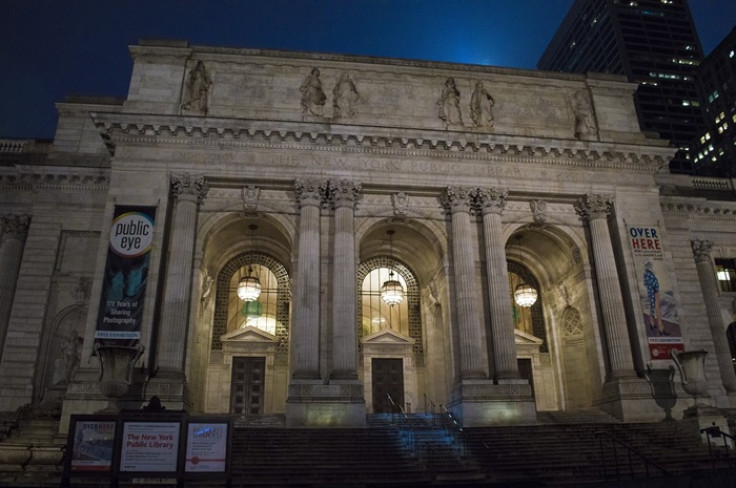
The New York Public Library, housed within the Stephen A. Schwarzman Building, comprises four major research libraries and 88 branch libraries across Staten Island, Manhattan, and the Bronx. Often dubbed the "main branch," it is renowned for its exceptional research collections in the social sciences and humanities. Nestled on Fifth Avenue near Bryant Park, the building is particularly famed for its elaborate marble facade and iconic lion statues, standing guard at the base of the steps.
6.
George Peabody Library, USA
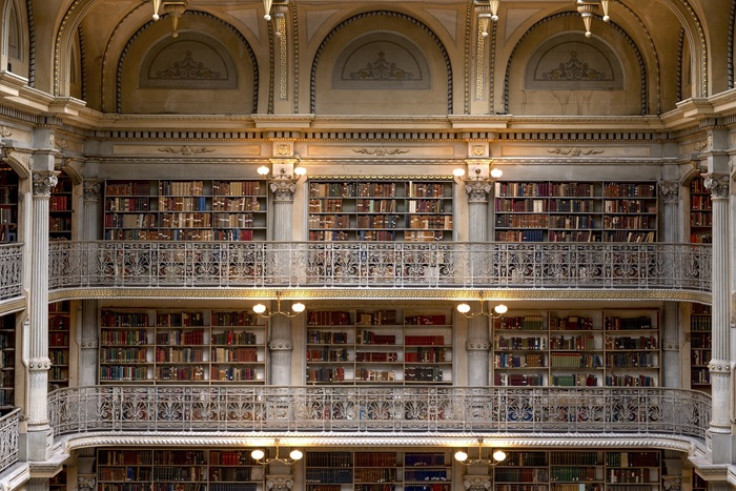
Part of Johns Hopkins University, the austere, five-story Peabody Library houses 300,000 volumes, predominantly scripts from the nineteenth century covering history, topography, architecture, British art, and religion. Despite being affiliated with the university, the library is open to the public in Baltimore, honoring its namesake, philanthropist George Peabody. Established in 1857 as part of the Peabody Institution, the library was dedicated to the citizens of Baltimore by George Peabody in recognition of their hospitality and kindness. Designed by Baltimore architect Edmund G. Lind in collaboration with Dr. Nathaniel H. Morrison, the library opened in 1878.
5.
National Library, Austria

In 1723, the library was inaugurated as a royal institution, seamlessly blending traditional design with baroque elegance. Marble statues grace the spaces between shelves, while frescoed ceilings and Ionic columns support the bookcases, creating a captivating ambiance. The unique marble carpeting adds an eccentric touch to this extraordinary establishment, which houses over 12 million items spanning from the 4th century CE to the present. Its collections include antique, medieval, and modern manuscripts from diverse cultures, with notable items such as the Vienna Dioscurides, honored on UNESCO's Memory of the World Program.
4.
Biblioteca Medicea Laurenziana, Italy
The Biblioteca Medicea Laurenziana in Florence commenced operations in 1571, with its design attributed to none other than Michelangelo. One notable feature of the library is its isolated section dedicated to housing the Medici rule collection, containing a wealth of early printed texts and illuminated manuscripts. With over 4,500 early printed books and more than 11,000 manuscripts, this library stands as a testament to the rich literary heritage of Florence.
3.
Bodleian Library, UK

Over the past four centuries, the library has amassed a collection of all books printed in the United Kingdom. With a staggering 12 million books housed in various underground passageways and buildings throughout the town, the scale of its holdings is awe-inspiring. Its beauty is further highlighted by its appearance in the Harry Potter films, where it served as a captivating filming location. The library offers a wealth of treasures to discover, including Shakespeare's First Folio, a Gutenberg Bible, and Charles Darwin's "On the Origin of Species," among its more than 13 million items.
2.
Trinity College Library, Ireland
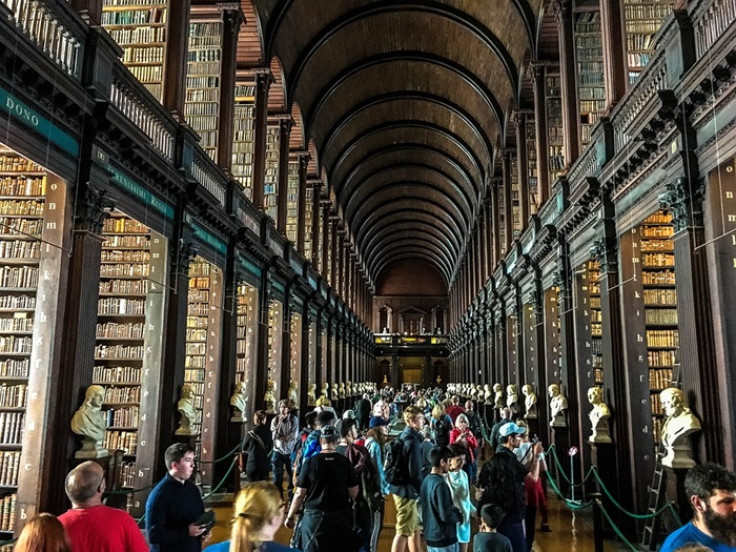
Originally completed in 1733, this architectural marvel spans 213 feet and comprises four distinct buildings. Designed by the visionary architect Thomas Burgh, the library features striking barrel-like ceilings and intricately detailed columns that house the institution's oldest collections, totaling over 6 million texts. The Long Room, dating back to the eighteenth century and stretching 65 meters in length, is the sanctuary for over 200,000 ancient books.
1.
Admont Abbey Library, Austria
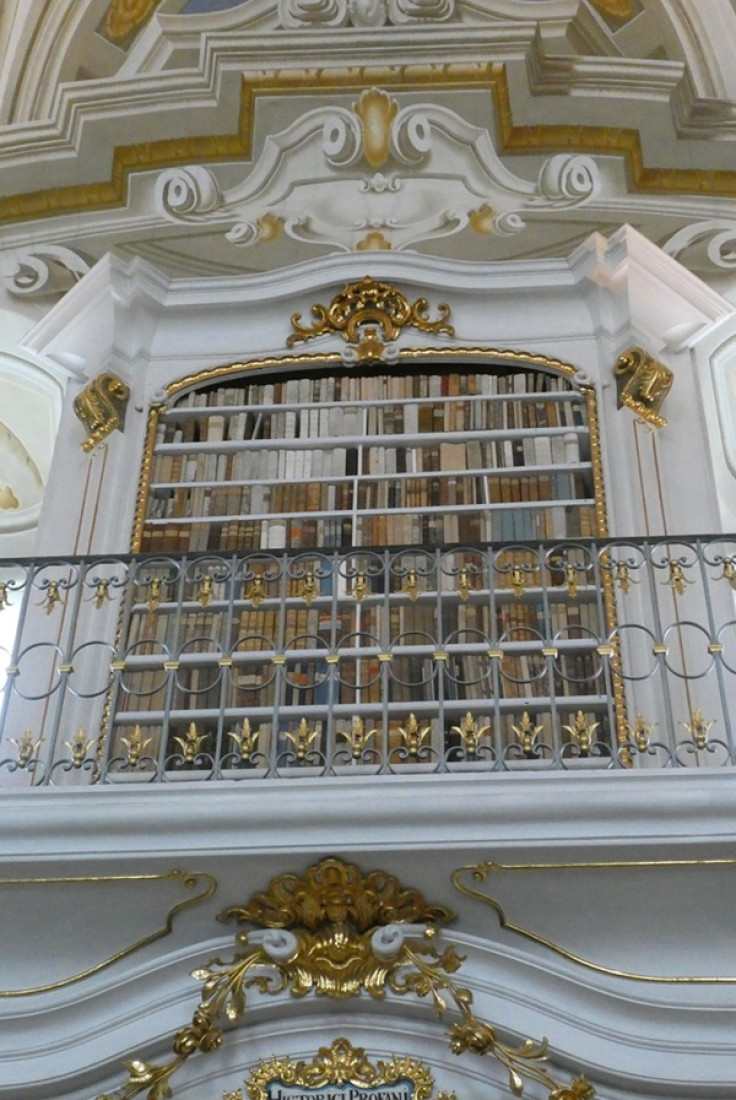
Admont Abbey Library, situated along the Enns River in southeastern Austria, is an architectural marvel dating back to 1776. Designed by the baroque architect Joseph Hueber, the library's is distinguished by its resplendent white and gold color scheme, and boasts of seven magnificent cupolas. One of its most striking features is the series of sculptures depicting the Four Last Things by Joseph Stammel, illustrating themes of life, heaven, hell, and death. Home to over 70,000 volumes out of the abbey's impressive collection of 200,000, the Admont Abbey Library proudly holds the title of the world's largest library.
Timeless symbols
The world's beautiful libraries stand as timeless symbols of human achievement, creativity, and intellectual curiosity. Let us cherish and celebrate these magnificent libraries as treasures of our shared cultural heritage, preserving them for generations to come.







